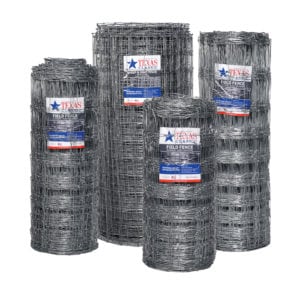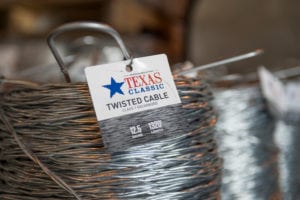Low carbon field fence is made from steel rod with a carbon content of approximately 0.10% making it fairly forgiving and easy to work with. Because of its elasticity, it is prone to elongation over time and is not as strong as high tensile wire.
Sheep and Goat Fence is typically designed with a 4″ x 4″ square opening from top to bottom for effective containment of livestock and exclusion of predators.
For years, low carbon barbed wire has been the wire of choice for many landowners. Low carbon barbed wire can be easily manipulated but is prone to elongation, meaning it will stretch or sag over time. The coating of the barbed wire will determine how long it will last. Low carbon fences are available in two coatings: Commercial and Class 1.
Also known as barbless wire, twisted cable is used where barbed wire is unnecessary or prohibited. Barbless wire provides more strength than single-strand wire and protects valuable animals from injury.



